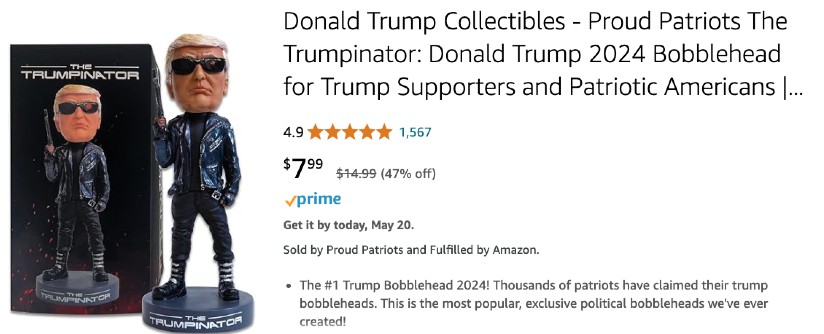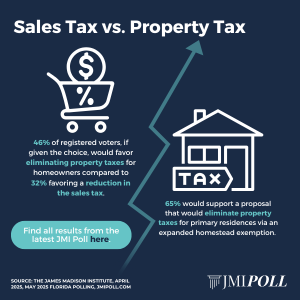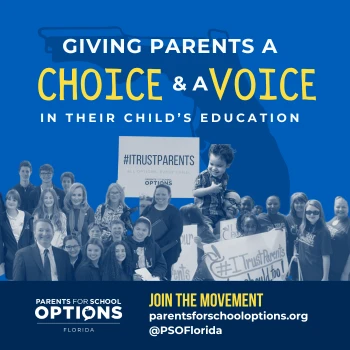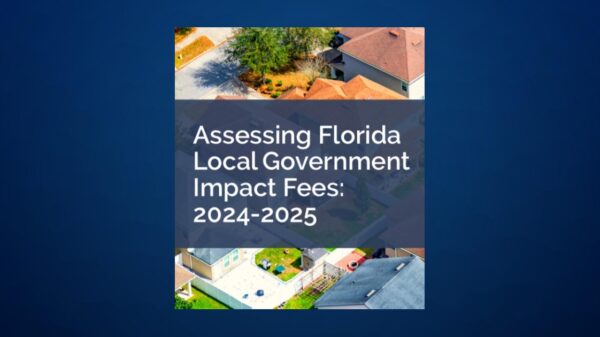TALLAHASSEE – The James Madison Institute unveiled the latest installment of the JMI Poll, two comprehensive surveys of 1,200 registered Florida voters, offering a revealing look at voter priorities and preferences across key policy and political issues.
Economic anxieties continue to dominate the minds of Florida voters. Rising cost of living tops voter concerns at 58%, followed by homeowners’ insurance (23%), housing costs (21%), high taxes (17%), and low wages (17%).
While 44% of voters support Trump’s tariff strategy for foreign policy and trade, 79% worry about rising consumer prices due to the policy.
Among those considering relocating or selling their homes, nearly half cited financial reasons- ranging from high costs and taxes to maintenance burdens.
2026 Hypothetical Gubernatorial Outlook
In the poll of Florida registered voters conducted from April 15 until April 22, Jason Pizzo led the Democratic primary field for Governor by a commanding margin. But in a surprise move, Pizzo announced he was quitting the Democratic Party.
Simultaneously, we noticed that a Trump endorsement strongly influenced Republican voters, but we didn’t see the impact of the President’s endorsement in the GOP primary ballot we tested in the April poll.
To assess the impact of these developments, we conducted a narrow follow-up poll in May with another 1,200 registered voters statewide.
Below are key findings from both the April and May polls:
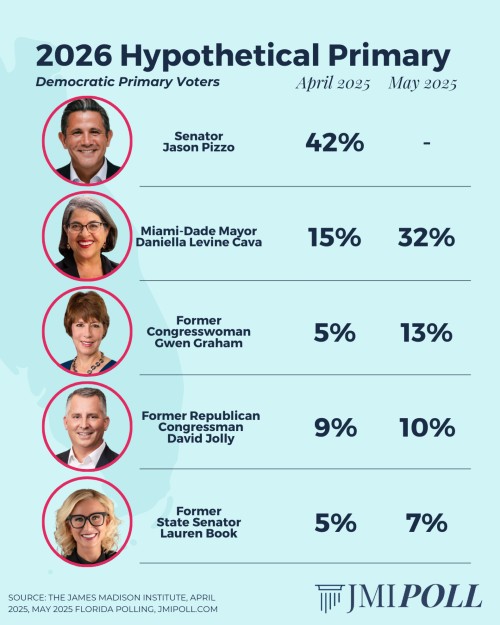
Democratic Primary Is Wide Open.
In April, Jason Pizzo led with 42% of Democratic primary voters.
With Pizzo’s exit from the party, Daniella Levine Cava surged from 15% to 32%, becoming the new frontrunner in our follow-up poll. Gwen Graham gained traction (5% to 13%), while others made modest gains. Undecided voters increased to 20%, reflecting the lack of name recognition among the candidates tested.
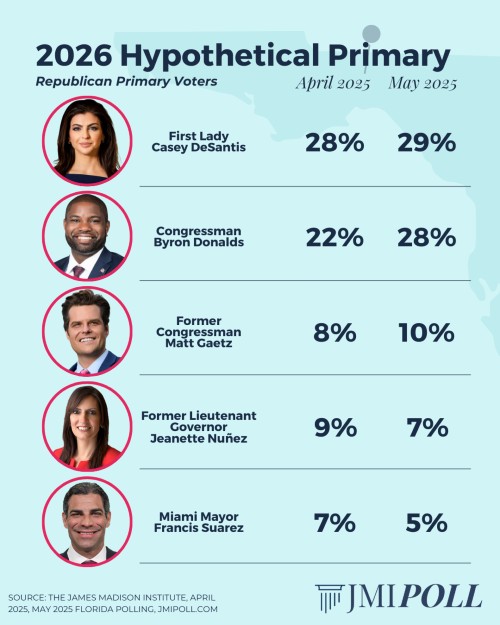
Republican Primary: Trump’s Unrealized Endorsement
In our April poll, the GOP primary for Governor was very close between Byron Donalds and Casey DeSantis ; however, the April poll did not indicate Donalds had been endorsed by Trump.
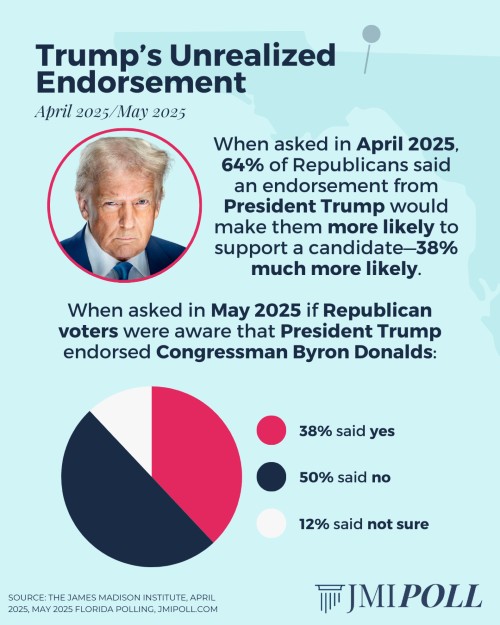
In both polls, more than 60% of Republicans said they would be much more or somewhat more likely to vote for the Trump-endorsed candidate, but DeSantis held small leads in both polls.
When we tested awareness of Trump’s endorsement in the May poll, only 38% of Republicans knew he had endorsed Donalds. Half (50%) said they were unaware, and another 12% were unsure.
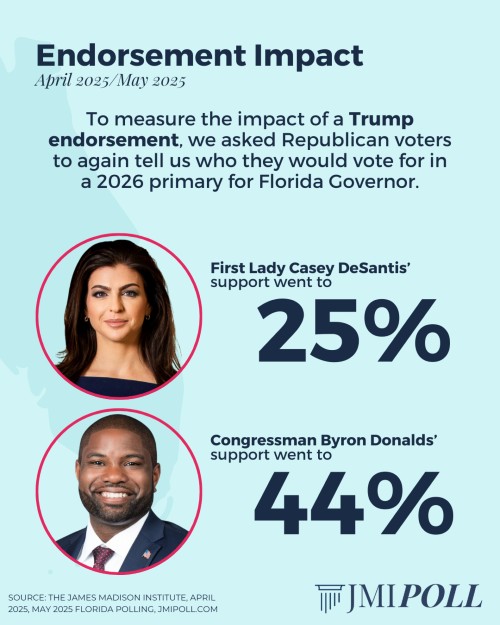
To measure the impact of this endorsement, we asked voters to consider their preferences after thinking more about the candidates. Donalds’ support jumped from 28% to 44%, overtaking DeSantis.
Trump’s endorsement carries huge weight among Republican voters, but half don’t know it happened.
The April poll also showed that Donalds had a +32 net favorability with very low negatives. His 71% name recognition trailed DeSantis (88%)—not surprising given DeSantis’s profile as the wife of a popular two-term governor with 80% GOP approval..
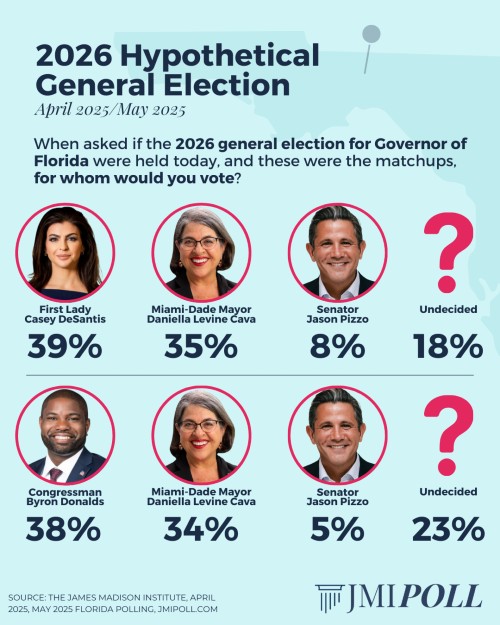
| Hypothetical General Election MatchupsWe tested two trial ballots with registered voters to explore how an independent candidacy from Pizzo might shape the general election. Given how far out the election remains, these are not likely voter models.In a Donalds vs. Levine Cava vs Pizzo race, Donalds led by 4 points with 23% undecided.In a DeSantis vs. Levine Cava vs Pizzo race, DeSantis also leads by 4 points with 18% undecided. |
| DeSantis and Donalds are polling close to 40%, roughly the share of registered Republicans in Florida. That suggests early general election support is tracking closely with partisan ID, with a large share of voters currently undecided or soft in their preferences. |
.
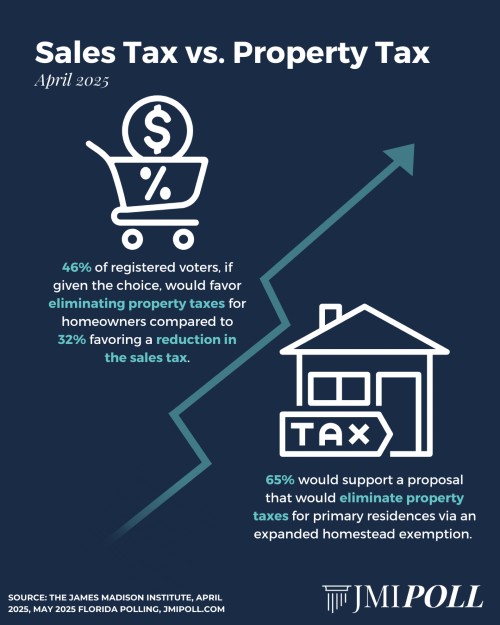
| Taxing Policy Preferences |
| Governor DeSantis as well as current budget proposals by both the House and Senate have all floated different ideas to reduce the tax burden. Nearly two in three voters (65%) would support a more limited proposal that would eliminate property taxes for primary residences via an expanded homestead exemption (34% strongly support), with 11% opposed. While there’s strong support for property tax elimination, 60% are concerned about potential cuts to local services, indicating a significant portion of voters weigh the trade-offs. |
| Despite concerns, if given the choice, 46% of Floridians would favor eliminating property taxes for homeowners compared to 32% favoring a reduction in the sales tax.More than half of voters (55%) are in favor of removing the 7% tax on phone, cable, and streaming bills despite its $600 million annual revenue for local governments. |

| Housing and Insurance Challenges |
| Recognizing ongoing issues with homeowners’ insurance in the state, one in three Florida residents saw no change or a reduction in their homeowners’ insurance premium. To address housing affordability, nearly a third of Floridians (32%) believe adding housing units could lower costs, while 49% do not view more construction as improving the situation. Seven in ten Floridians (70%) oppose local government restrictions on modifying properties for additional living spaces, like mother-in-law suites. Dentalcare Access Issues With 65 out of 67 counties in Florida reporting a dental shortage, nearly one in five (18%) voters report difficulties scheduling dental appointments, almost one in four (24%) have issues with providers not accepting insurance, and 26% find securing timely appointments challenging. |
| Despite concerns, if given the choice, 46% of Floridians would favor eliminating property taxes for homeowners compared to 32% favoring a reduction in the sales tax.More than half of voters (55%) are in favor of removing the 7% tax on phone, cable, and streaming bills despite its $600 million annual revenue for local governments. |
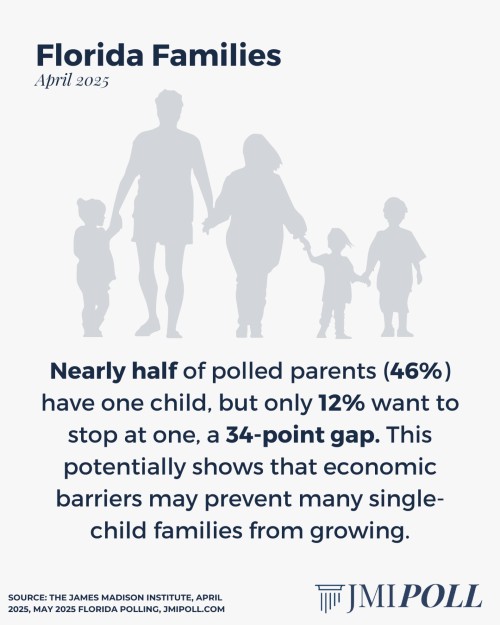
| Supporting Families |
Over one in three voters (35%) have children under 18 in the home and represent a key demographic for family-oriented policies, such as the Trump administration’s proposed $5,000 “baby bonus.”
When asked, “If money were no object, and you could educate your child(ren) in any way you wished, which of the following would you choose?” Floridians desired alternatives to traditional public schools, with more than two in five (41%) preferring private or charter schools, plus 13% for homeschooling, signaling strong demand for school choice.
| Nearly half of parents in the poll (46%) have one child, but only 12% want to stop at one, a 34-point gap.This suggests that economic barriers prevent many single-child families from growing, a key opportunity for the $5,000 child proposal to address. Having two children is a stable goal, with 38% reporting two children in the home, matching the 38% who want two in the absence of financial pressures, indicating that families with two children are generally meeting their aspirations. |
| There is an unmet desire for larger families. There’s a 9-point gap for three children (10% vs. 19%) and an 18-point gap for four or more (6% vs. 24%),showing that even among parents, there’s a strong desire for larger families that isn’t realized. While economic pressure is a likely contributor, other factors like timing, health, and lifestyle also play roles. |
| Portable Benefits for Gig Workers and Freelancers |
| Florida has a robust gig economy, driven by sectors like ridesharing (e.g., Uber, Lyft), delivery services (e.g., DoorDash, Instacart), and independent contracting in the construction, hospitality, and tourism industries. Florida voters strongly support portable benefits for gig workers and freelancers, with 65% favoring access to healthcare, retirement plans, and paid leave. |
” |



